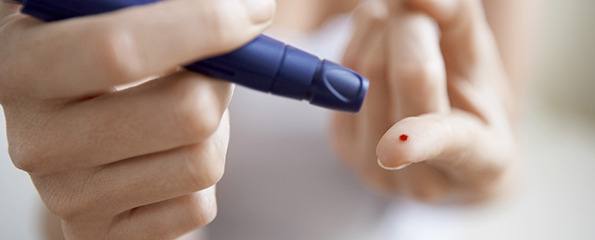The link between type 2 diabetes and incontinence
One of the lesser understood consequences of type 2 diabetes is its potential to exacerbate bladder and bowel control problems.
Constipation
Constipation affects nearly 60 per cent of people with diabetes, and constipation increases the risk of urinary incontinence. This is essentially due to a space issue; an enlarged bowel compresses on the bladder and reduces its holding capacity, thereby risking accidental urinary leakage.
High blood sugar levels
If blood sugar levels are poorly controlled, the body will try to remove the excess blood sugars by producing more urine, which may also lead to stress incontinence (leakage when sneezing, running etc.)
Obesity
Being overweight is a condition that puts people at higher risk of both type 2 diabetes and incontinence. Overweight is a major contributor to bladder and bowel control, because the excess strain on the pelvic floor stretches and weakens the pelvic floor muscles, compromising their ability to support the bladder and bowel, and to shut off the urinary and anal passages.
Nerve damage
Poorly controlled or long-term type 2 diabetes can cause damage to nerves, which can lead to problems with bladder and bowel control. This may manifest as a loss in sensation, little warning given about having to go to the toilet, or lack of awareness that your bladder is filling. There may also be reduced sensation about whether or not the bladder or bowel is empty, increasing the risk of urinary tract infections (UTIs) or kidney damage.
Reduced immunity.
Diabetes also interferes with the immune system, putting sufferers at greater risk of infection. This combination of a declining immunity and poor bladder emptying due to nerve damage puts people at a greater risk of UTIs. These can be treated with antibiotics and by practicing good personal hygiene; for example wiping from front to back to avoid contaminating the vagina with bowel bacteria.
Medications
Medications for type 2 diabetes such as metformin, acarbose and repaglinide can cause diarrhoea. Healthy sources of soluble fibre in the diet, such as oats, barley, rye, peeled fruit and vegetables can help restore bowel motions to normal.
Five steps for good bladder and bowel health
For the 950,000 Australians affected by type 2 diabetes, good bladder and bowel health becomes even more critical. The Continence Foundation of Australia recommends these five steps for healthy bladder and bowel habits.
- Eat well and include at least 30 g of fibre daily.
A well-balanced diet with adequate fibre will help prevent constipation also help achieve a healthier weight.
- Drink about 1.5 -2 litres of fluid daily, limiting caffeine and fizzy drinks.
Drink to satisfy your thirst, not to meet an arbitrary volume, and moderate the caffeine and fizzy drinks which can irritate the bladder. Your urine should be pale lemon in colour.
- Exercise regularly.
Aim for about 30 minutes a day and if you’re not the sporty type, walking is great exercise.
- Keep your pelvic floor toned.
Men and women can strengthen and tone their pelvic floor muscles by doing their pelvic floor exercises daily. Find out how to do them correctly by phoning the National Continence Helpline on 1800 33 00 66 or visiting continence.org.au
- Practise good toilet habits
Empty your bowel when you get a strong urge, and avoid holding on. If you hold on too long, you risk the stool becoming harder, which increases the likelihood of constipation. Sit with your knees slightly higher than your hips, with elbows on your knees and lean forward. Wipe from front to back to avoid contaminating the vagina with bowel bacteria.
Empty your bladder when it’s full, and don’t get into the habit of going ‘just in case’. Be sure to empty your bladder completely every time.
If you notice your bladder or bowel control problems worsening, phone the National Continence Helpline on 1800 33 00 66. The Continence Foundation is the national peak body working to improve the quality of life of the 4.6 million people affected by incontinence.
(Source: Continence Foundation of Australia)
Dates
Tags
Created by:

 Login
Login














